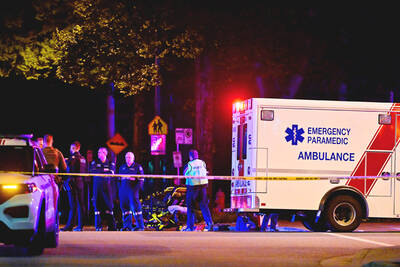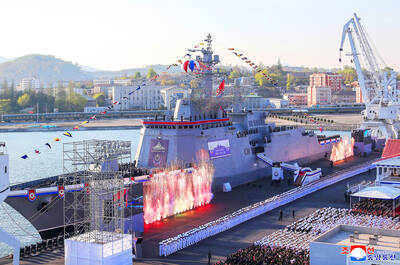After more than 40 years, the former US army officer found guilty of organizing mass killings in the Vietnamese community of My Lai during the war has made a public apology.
“There is not a day that goes by that I do not feel remorse for what happened that day in My Lai,” former lieutenant William Calley told members of the Kiwanis Club of Greater Columbus, Georgia.
“I feel remorse for the Vietnamese who were killed, for their families, for the American soldiers involved and their families. I am very sorry,” he said.
Calley spoke on Wednesday, but because of a restricted audience, his remarks did not become known until now.
The killings that occurred on March 16, 1968, in the South Vietnamese hamlet of My Lai prompted widespread outrage around the world.
They are also credited with advancing the end of the Vietnam War because they significantly undermined US public support for the war effort.
MISSION
The massacre began when men of Charlie Company under the command of Lieutenant Calley opened fire on civilians during a “search and destroy” mission in My Lai and neighboring villages.
The targets of the killings were mainly old men, women and children — all unarmed — as most younger males of the community were working in the fields.
The exact toll of the massacre still remain in dispute. But US estimates suggest that between 347 and 504 unarmed citizens were massacred that day.
According to testimony presented during Calley’s trial, dozens of people were herded into a local irrigation ditch and killed with automatic weapons.
A large group of about 70 to 80 villagers, rounded up in the center of the village, were killed personally by Calley and other soldiers under his command.
Calley also shot two other large groups of civilians with a weapon taken from a soldier who had refused to obey his orders, it was revealed.
The massacre did not become public knowledge until November 1969, when independent investigative journalist Seymour Hersh broke the story after extensive conversations with Calley.
The lieutenant, the only American tried in connection with the massacre, was convicted and sentenced by a court-martial to life imprisonment. But he was freed after three years under house arrest when then-US president Richard Nixon intervened.
Although his presentation at the Kiwanis Club was brief, Calley took a few questions.
Asked if obeying an unlawful order was not itself an unlawful act, he said: “I believe that is true.”
“If you are asking why I did not stand up to them when I was given the orders, I will have to say that I was a second lieutenant getting orders from my commander and I followed them — foolishly, I guess,” he said.
Calley’s immediate commander at that time was Captain Ernest Medina, who was also tried in connection to the My Lai massacre.
But Medina was represented by famous defense attorney F. Lee Bailey and was acquitted of all charges in 1971.
Following his release from house arrest, Calley settled in Columbus, Georgia, where he worked at jewelry store that belonged to his father-in-law.
He now lives in Atlanta. He complained that some of the basic civil rights remained denied to him following his conviction.
“I still cannot vote,” he said.
SURVIVOR
A survivor of the massacre said yesterday he welcomed the public apology.
“It’s a question of the past and we accept his apologies, although they come too late,” Pham Thanh Cong, director of a small museum at My Lai, said by telephone.
“However, I prefer that he send his apologies to me in writing or by e-mail.”

Archeologists in Peru on Thursday said they found the 5,000-year-old remains of a noblewoman at the sacred city of Caral, revealing the important role played by women in the oldest center of civilization in the Americas. “What has been discovered corresponds to a woman who apparently had elevated status, an elite woman,” archeologist David Palomino said. The mummy was found in Aspero, a sacred site within the city of Caral that was a garbage dump for more than 30 years until becoming an archeological site in the 1990s. Palomino said the carefully preserved remains, dating to 3,000BC, contained skin, part of the

TRUMP EFFECT: The win capped one of the most dramatic turnarounds in Canadian political history after the Conservatives had led the Liberals by more than 20 points Canadian Prime Minister Mark Carney yesterday pledged to win US President Donald Trump’s trade war after winning Canada’s election and leading his Liberal Party to another term in power. Following a campaign dominated by Trump’s tariffs and annexation threats, Carney promised to chart “a new path forward” in a world “fundamentally changed” by a US that is newly hostile to free trade. “We are over the shock of the American betrayal, but we should never forget the lessons,” said Carney, who led the central banks of Canada and the UK before entering politics earlier this year. “We will win this trade war and

‘BODIES EVERYWHERE’: The incident occurred at a Filipino festival celebrating an anti-colonial leader, with the driver described as a ‘lone suspect’ known to police Canadian police arrested a man on Saturday after a car plowed into a street party in the western Canadian city of Vancouver, killing a number of people. Authorities said the incident happened shortly after 8pm in Vancouver’s Sunset on Fraser neighborhood as members of the Filipino community gathered to celebrate Lapu Lapu Day. The festival, which commemorates a Filipino anti-colonial leader from the 16th century, falls this year on the weekend before Canada’s election. A 30-year-old local man was arrested at the scene, Vancouver police wrote on X. The driver was a “lone suspect” known to police, a police spokesperson told journalists at the

North Korean leader Kim Jong-un has unveiled a new naval destroyer, claiming it as a significant advancement toward his goal of expanding the operational range and preemptive strike capabilities of his nuclear-armed military, state media said yesterday. North Korea’s state-run Korean Central News Agency (KCNA) said Kim attended the launching ceremony for the 5,000-tonne warship on Friday at the western port of Nampo. Kim framed the arms buildup as a response to perceived threats from the US and its allies in Asia, who have been expanding joint military exercises amid rising tensions over the North’s nuclear program. He added that the acquisition